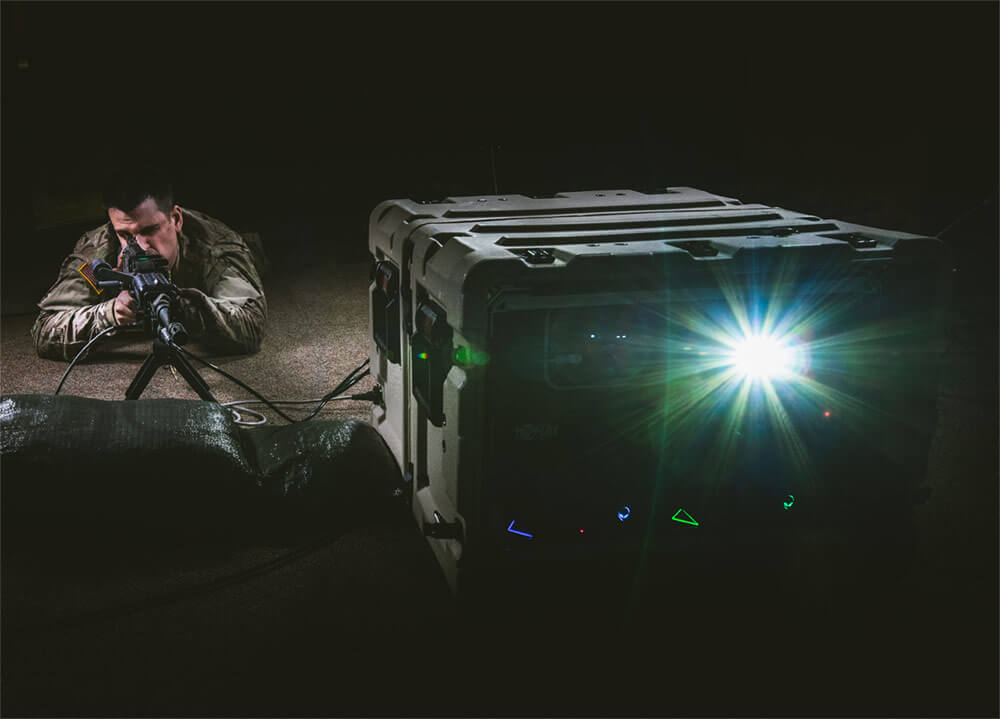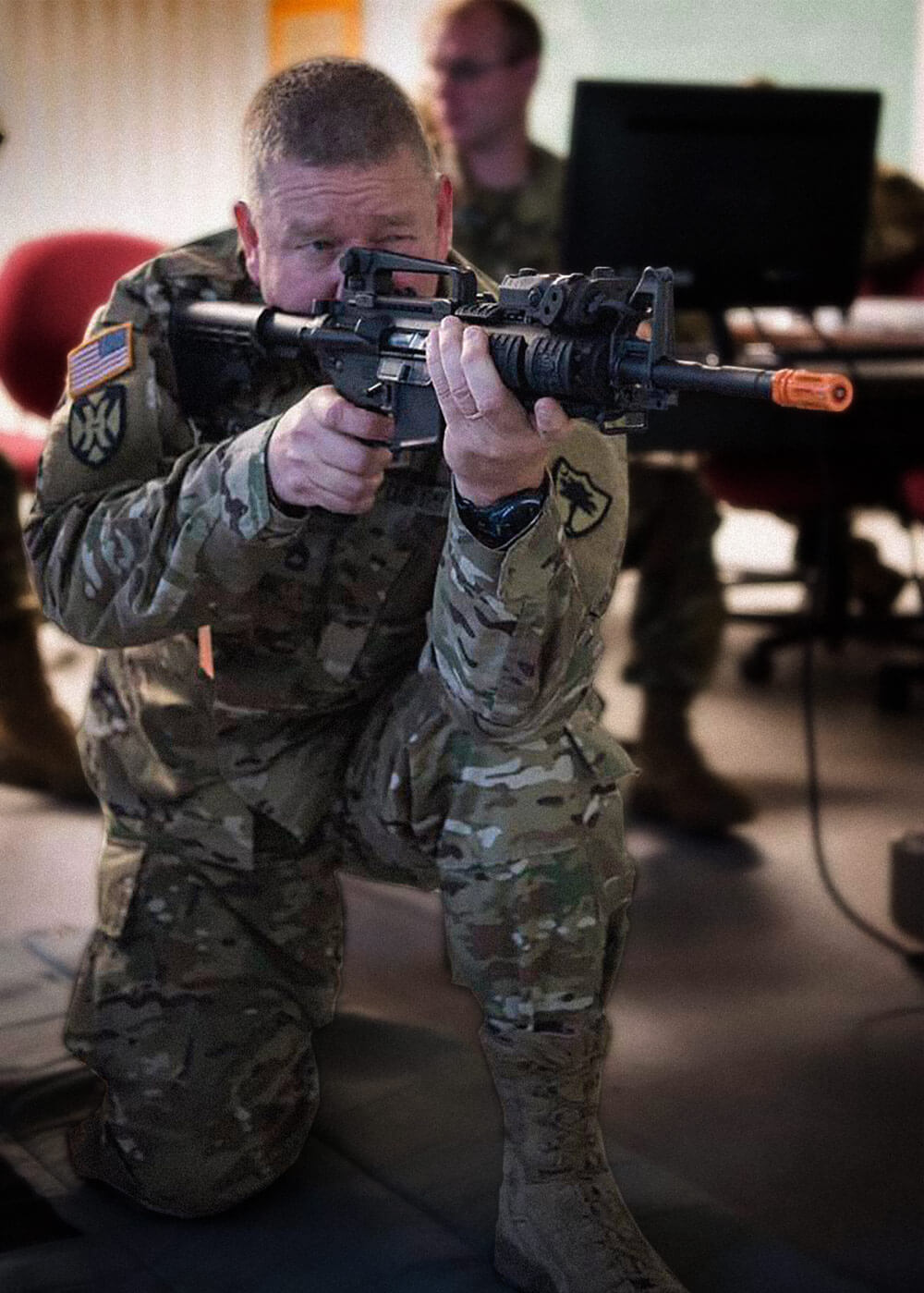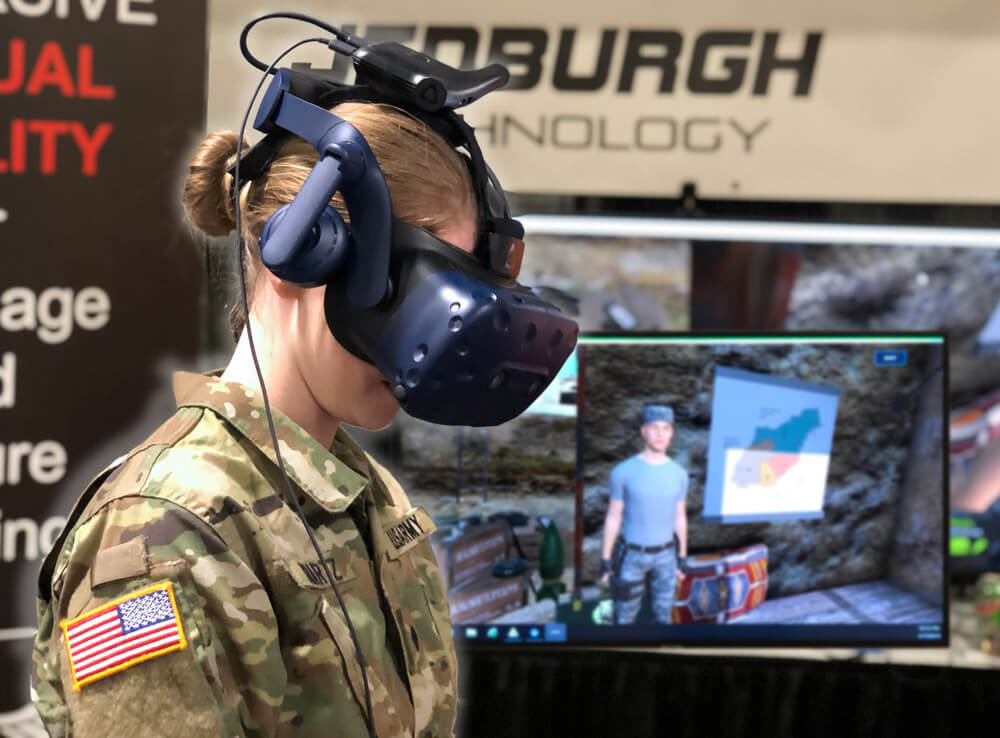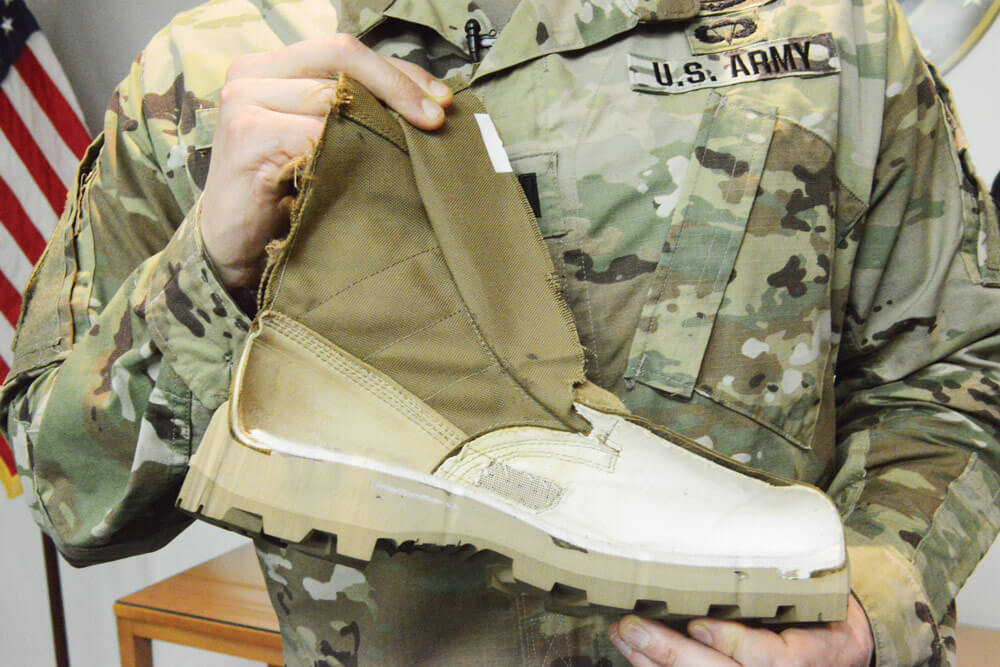South Carolina Leads the Way with Virtual Marksmanship System
Marksmanship. Few skills are more critical to a Soldier’s lethality and overall survivability on the battlefield than marksmanship. This essential skill becomes even more crucial when considered within the framework of ARNG 4.0 – the Army National Guard’s newest framework, which requires enhanced combat readiness for all Soldiers.
As the Guard progresses in the move to a more operational and readily mobilized force, innovative training opportunities are becoming more common. One such opportunity that the South Carolina Army National Guard has employed is through use of the Mobile Marksmanship Training Simulator (MMTS).

“Our success depends on the readiness of each individual fighting Soldier,” said CSM Russ Vickery, South Carolina’s Command Sergeant Major. “Although relatively successful over the years, the need for enhanced marksmanship capabilities on the individual level has increased, requiring leaders to think of innovative ways to get weapons into the hands of Soldiers throughout the year to increase confidence, accuracy and ultimately readiness for battle.”
Developed by Laser Shot, Inc., the MMTS system is billed as a multi-functional firearms simulator designed to address both basic and advanced firearms training requirements for both combat and combat support units. Used in conjunction with on-screen targets and virtual training vignettes, the system’s hit detection camera technology employs visible and infrared lasers that are read by a proprietary sub-pixel laser tracking algorithm. This allows the Laser Shot detection cameras to identify the location of the lasers emitted from the firearm and transmit the recorded data to the computer system, which then displays the precise location of impact on screen. The uniquely advanced camera technology suite gives Laser Shot’s MMTS what the manufacturer describes as the fastest and most accurate tracking method available for simulated firearms on the market today.
The MMTS is capable of providing immediate feedback to both the Soldier and instructor. For example, the system’s responsive Location of Misses and Hits indicator can be seen in the peripheral view of the shooter and displays instant shot placement without interrupting the Soldier’s sight picture.

The MMTS is compatible for use with both simulated and actual firearms. Simulated weapons are available in a wide range of both handgun and rifle options. These true-to-life replicas mimic the size, weight and recoil of the real weapon version to allow for the most realistic experience possible. Soldiers also have the option to convert individual firearms into simulated weapons by inserting a dry-fire laser into the barrel or chamber. By using the laser insert, when the firing pin makes contact with the primer cap, an infrared laser is emitted rather than a bullet.
Perhaps the MMTS’s most beneficial feature, a feature that sets it apart from other similar systems, is its portable nature.
“The old systems are tethered to one location and make it difficult for commanders to get their Soldiers to it, along with [the added difficulty of] competing for time on the systems,” said CSM Vickery. “With enough of these portable systems, we could potentially get every Soldier in the South Carolina Army National Guard hands-on weapons training for at least 30 minutes each quarter without impeding other training requirements.”
Soldiers from the 108th Public Affairs Detachment, South Carolina Army National Guard trained on the MMTS at the Bluff Road Armory in Columbia, South Carolina, in May of 2018. The MMTS provided the troops with several training scenarios from its Primary Marksmanship Instruction (PMI) course. Specifically designed for small arms skill development, sustainment and qualification, the course is based on fundamentals pulled straight from the Army field manual. When using 12-foot portable screens, the program can simultaneously simulate up to three lanes, and additional lanes can be added by networking together multiple MMTS units.

“The realism you experience on this system is incredibly beneficial to building Soldier confidence and skills with weapons,” said SSG William Cox, a member of the South Carolina Army National Guard Marksmanship Training Unit and PMI instructor. “The visual feedback provided through this system relates directly to what the Soldier will experience – from the dirt that flies up from the ground if the Soldier is shooting too low, to the dirt smudges on the edge of the zeroing target card. It looks and feels like you are on the ranges we use.”
The members of the 108th used their time on the MMTS to prepare for the unit’s upcoming small arms and crew-served weapons qualifications, which would be held at live ranges later that summer. The unit completed training scenarios including a zero range, which concentrated on shot groups and technique, and a pop-up M4 qualification range.
“The system provided realistic training scenarios, using real weapons,” said SFC Joe Cashion, the 108th’s readiness noncommissioned officer. “It’s always good to get marksmanship training with our individual weapons and the simulator is about as close to the real thing as you can get. The marksmanship training team was very knowledgeable and what we all learned will undoubtedly help us on the actual qualification range.”
In 2018 the South Carolina Army National Guard was the only State in possession of a Laser Shot simulator available for use by Guard Soldiers for the improvement of marksmanship skills.
by Staff Writer Matthew Liptak


